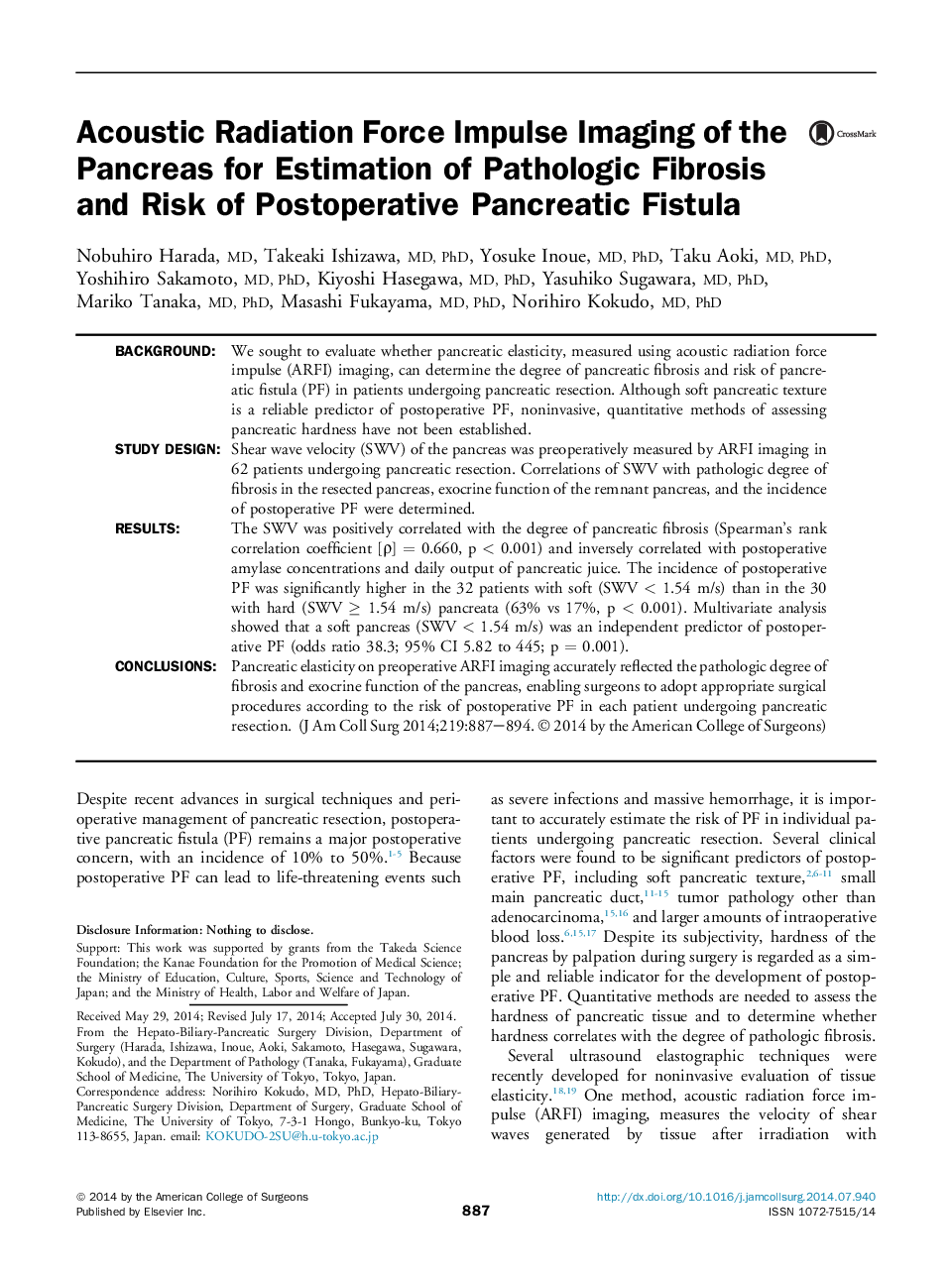| Article ID | Journal | Published Year | Pages | File Type |
|---|---|---|---|---|
| 6252843 | Journal of the American College of Surgeons | 2014 | 13 Pages |
BackgroundWe sought to evaluate whether pancreatic elasticity, measured using acoustic radiation force impulse (ARFI) imaging, can determine the degree of pancreatic fibrosis and risk of pancreatic fistula (PF) in patients undergoing pancreatic resection. Although soft pancreatic texture is a reliable predictor of postoperative PF, noninvasive, quantitative methods of assessing pancreatic hardness have not been established.Study DesignShear wave velocity (SWV) of the pancreas was preoperatively measured by ARFI imaging in 62 patients undergoing pancreatic resection. Correlations of SWV with pathologic degree of fibrosis in the resected pancreas, exocrine function of the remnant pancreas, and the incidence of postoperative PF were determined.ResultsThe SWV was positively correlated with the degree of pancreatic fibrosis (Spearman's rank correlation coefficient [Ï] = 0.660, p < 0.001) and inversely correlated with postoperative amylase concentrations and daily output of pancreatic juice. The incidence of postoperative PF was significantly higher in the 32 patients with soft (SWV < 1.54 m/s) than in the 30 with hard (SWV ⥠1.54 m/s) pancreata (63% vs 17%, p < 0.001). Multivariate analysis showed that a soft pancreas (SWV < 1.54 m/s) was an independent predictor of postoperative PF (odds ratio 38.3; 95% CI 5.82 to 445; p = 0.001).ConclusionsPancreatic elasticity on preoperative ARFI imaging accurately reflected the pathologic degree of fibrosis and exocrine function of the pancreas, enabling surgeons to adopt appropriate surgical procedures according to the risk of postoperative PF in each patient undergoing pancreatic resection.
